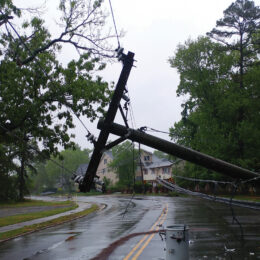
An electrical receptacle, with its oval shape and tiny symmetrical slots over the little round hole, can look like an emoji of a face to imaginative children. Look closer, and it’s the emoji of a shocked face. And shock is what outlets can do if a child, left unsupervised, inserts a paper clip, coin, key, or bobby pin into those slots.
But receptacles don’t pose dangers just to children. Accidents or carelessness with plugged-in appliances around water or simply faulty receptacles and wiring can cause electrical shocks and fires that can lead to disaster and tragedy.
“Electrical safety is always improving,” said John Gasstrom, CEO of Indiana Electric Cooperatives. “There are many consumer safety devices that are now either code and are standard in any newer home, or available and can be installed to make you home electrically safer. It’s important to consider these devices and familiarize yourself with them, especially when children are in the home.”
Here are three types of electrical receptacles installed today.
TRR
Tamper-resistant receptacles have an interior spring-loaded cover that closes off the slots of the receptacle until a plug is inserted. They open only when two prongs of a plug are inserted simultaneously to compress both springs at the same time for the electrical circuit to be created. Since 2008, the National Electrical Code has required new and renovated dwellings be equipped with TRRs.
GFCI
Ground-fault circuit interrupters have been around for many years and are required in receptacles found in bathrooms, kitchens or laundry rooms and on those found outdoors — wherever there may be water and/or dampness present. GFCIs have “reset” and “test” buttons associated with them. It is a circuit breaker that stops the flow of electricity the instant it detects an imbalance in the current going to and returning from equipment along the circuit.
AFCI
Arc-fault circuit interrupters are similar to GFCIs but detect a different kind of problem. AFCIs prevent an electrical fire in your home due to “arcing.” An arc fault is an unintended arc created by current flowing through an unplanned path. Arcing creates high-intensity heating, resulting in burning particles that can ignite nearby material like wood or insulation.
If your home doesn’t have these three life-saving types of receptacles, contact a qualified electrician about installing them where needed.



